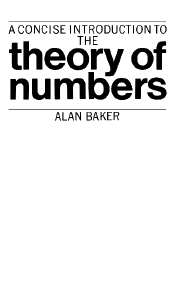Introduction: Gauss and number theory
Published online by Cambridge University Press: 05 June 2012
Summary
Without doubt the theory of numbers was Gauss' favourite subject. Indeed, in a much quoted dictum, he asserted that Mathematics is the Queen of the Sciences and the Theory of Numbers is the Queen of Mathematics. Moreover, in the introduction to Eisenstein's Mathematische Abhandlungen, Gauss wrote ‘The Higher Arithmetic presents us with an inexhaustible storehouse of interesting truths – of truths, too, which are not isolated but stand in the closest relation to one another, and between which, with each successive advance of the science, we continually discover new and sometimes wholly unexpected points of contact. A great part of the theories of Arithmetic derive an additional charm from the peculiarity that we easily arrive by induction at important propositions which have the stamp of simplicity upon them but the demonstration of which lies so deep as not to be discovered until after many fruitless efforts; and even then it is obtained by some tedious and artificial process while the simpler methods of proof long remain hidden from us.’
All this is well illustrated by what is perhaps Gauss' most profound publication, namely his Disquisitiones arithmeticae. It has been described, quite justifiably I believe, as the Magna Carta of Number Theory, and the depth and originality of thought manifest in this work are particularly remarkable considering that it was written when Gauss was only about eighteen years of age.
Information
- Type
- Chapter
- Information
- A Concise Introduction to the Theory of Numbers , pp. xi - xivPublisher: Cambridge University PressPrint publication year: 1984
